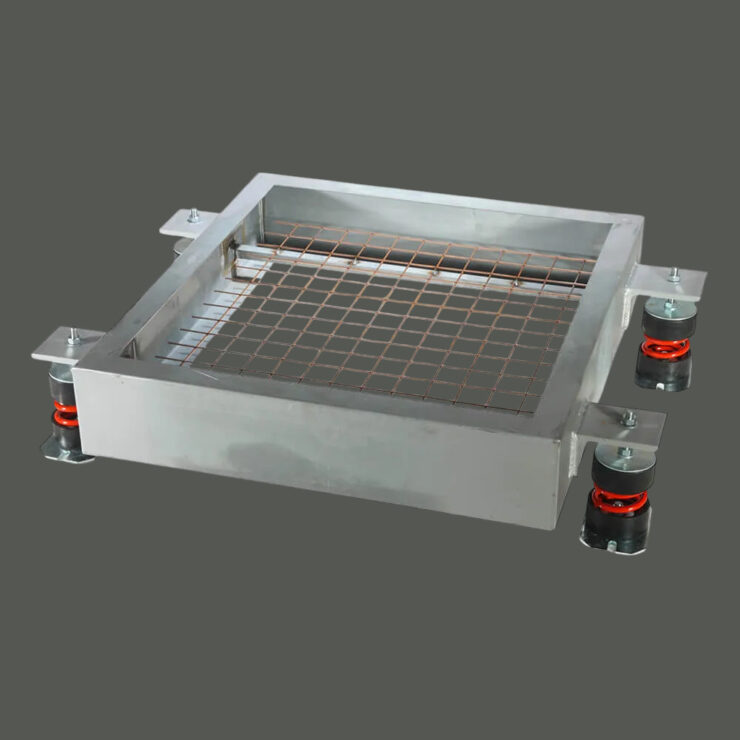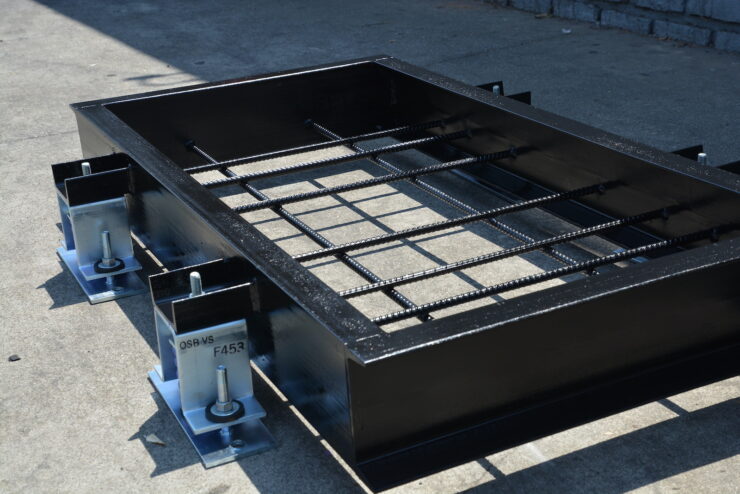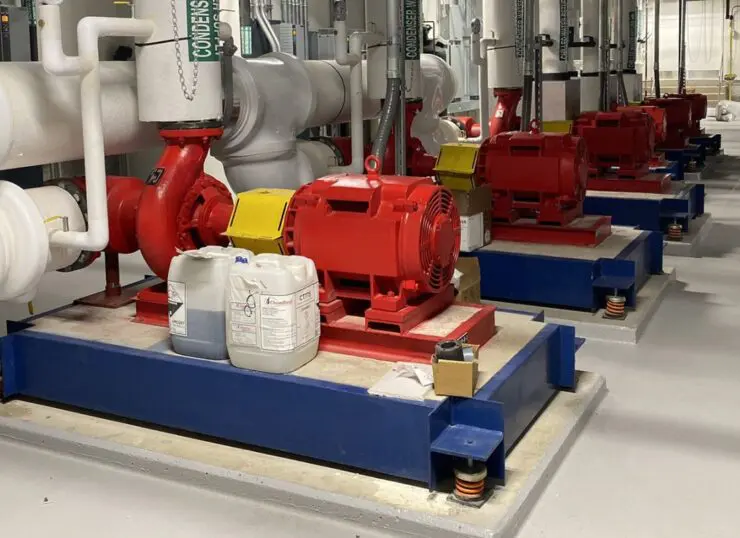In the world of building services and mechanical installations, stability and vibration control are paramount. When plant equipment such as pumps, fans, and chillers are installed without proper isolation, they can transmit noise and vibration throughout a structure. This can lead to discomfort for occupants, premature wear on components, and even structural damage over time. One of the most effective ways to combat these issues is through the use of inertia bases.
What Are Inertia Bases?

Inertia bases are robust steel-framed platforms that are designed to add mass and stability to mechanical equipment. Typically, the steel frame is filled with concrete, increasing the unit’s overall mass and lowering its centre of gravity. This added mass helps reduce the movement of the machinery during operation, making it less likely to transfer vibration to the supporting structure.
They are commonly used in HVAC systems where equipment such as air handling units, centrifugal fans, or water pumps require precise control over vibration. By stabilising the equipment, inertia bases play a crucial role in maintaining system efficiency and minimising maintenance requirements.
Why Vibration Control Matters
When machinery operates at high speeds or involves rotating components, it can generate significant levels of vibration. If not properly isolated, this vibration can travel through floor slabs, pipework, and duct systems, creating noise disturbances and structural issues. Over time, constant vibration can also weaken connections and lead to leaks or alignment problems in the system.
In multi-storey commercial buildings, hospitals, hotels, and residential developments, vibration control is not just a matter of comfort—it is often a requirement to meet building regulations and acoustic standards. Inertia bases help meet these standards by reducing the transmission of vibrational energy.
The Engineering Behind Inertia Bases
An inertia base typically consists of a welded steel frame designed to support a concrete mass. The total weight and dimensions of the base are calculated based on the size and function of the supported equipment. Engineers may also consider the natural frequency of the machinery to ensure that the inertia base does not amplify any vibrations, but rather dampens them effectively.
The base is often used in conjunction with spring or rubber mounts, which provide the final level of isolation between the base and the building structure. In some applications, particularly those involving sensitive environments like laboratories or hospitals, multiple layers of vibration control may be employed for maximum effect.
Applications and Benefits
The use of inertia bases is particularly common in the following scenarios:
- Rooftop units where wind loading and structural movement are significant.
- Basement pump rooms with high-duty circulation pumps.
- Commercial air conditioning systems where fan vibration must be tightly controlled.
- Industrial sites where heavy-duty compressors and generators are installed.
The key benefits of using inertia bases include:
- Improved longevity of mechanical equipment.
- Reduced noise and vibration transmission throughout the building.
- Better system performance due to improved equipment alignment and stability.
- Enhanced occupant comfort in commercial and residential settings.
Choosing the Right Product

As with any structural or mechanical component, the effectiveness of inertia bases depends on their quality and suitability for the specific equipment in question. Factors such as weight capacity, dimensions, and compatibility with vibration isolators must be considered during the specification process.
For those seeking high-quality solutions, inertia bases from trusted suppliers such as Stourflex provide reliable, UK-manufactured options that meet the demands of today’s complex building services installations.
Final Thoughts
Inertia bases may seem like a background element in mechanical design, but they are fundamental to the smooth and quiet operation of critical systems. Their role in vibration isolation, equipment protection, and overall system performance makes them a smart investment for anyone responsible for mechanical plant installations.
Whether you’re specifying an HVAC system for a new development or retrofitting existing infrastructure, including inertia bases in your design is a decision that brings long-term benefits in both performance and peace of mind.

